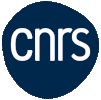Post-doctoral position – Spintronic devices based on magnetic skyrmions (March 04th, 2020)

Design of memory and logic devices based on magnetic skyrmions Spintec invites applications for a postdoctoral fellowship on the design of memory and logic devices based on magnetic skyrmions. Magnetic skyrmions are topological spin textures that show great promise for storing and manipulating information at the nanoscale. Logic and memory devices have recently been proposed […]
Read moreMultiferroic Proximity Effect in Graphene (March 03rd, 2020)

A possibility of controlling electronic and magnetic properties of graphene via proximity of multiferroic substrate is demonstrated. Coupling graphene to a multiferroic oxide (bismuth ferrite) give rise to novel class of spin-dependent transport phenomena based on multiferroic-induced proximity effects in graphene. Based on these findings, a concept of multi-resistive device in lateral geometry is proposed. […]
Read moreSelf-induced spin-charge conversion in ferromagnetic thin films (February 28th, 2020)

The generation of a spin current and its further conversion to a charge current have attracted considerable attention, facilitating advances in basic physics along with the emergence of closely related applications in the field of spintronics. In this study, we experimentally and theoretically demonstrated the self-induced inverse spin Hall effect for spin-charge conversion, triggered by […]
Read more[POSITION FILLED] PhD topic – Exploring THz spintronics through spin dynamics in antiferromagnets (February 04th, 2020)

The SPINTEC laboratory in Grenoble, France, is seeking a PhD candidate for a joint application to a specific PhD studentship program. The joint application is to be submitted by March 2020 for a studentship available for admission in October 2020, for 3 years. Excellent academic record is mandatory. Applicants should have a Master’s degree in […]
Read moreHprobe, la pépite française qui veut accélérer le test de mémoires et capteurs magnétiques (February 04th, 2020)

Hprobe passe à la vitesse supérieure. Après avoir levé 300 000 euros en avril 2018, la start-up issue de SPINTEC et spécialiste du test magnétique de composants semi-conducteurs vient de boucler un deuxième tour de table de 2 millions d’euros. Parmi les investisseurs figurent le fond d’investissement taïwanais ITIC et l’équipementier japonais de production de […]
Read moreSeminar – Antiferromagnetic Insulatronics: Spintronics without magnetic fields and moving electrons (January 22nd, 2020)

On June 19th at 11:00, Mathias Klaui from Johannes Gutenberg-University Mainz, Germany will give us an IEEE Distinguished Lecture (*) the seminar will take place by video-conference. Contact for the link : adriana-gabriela.stoenescu@cea.fr Antiferromagnetic Insulatronics: Spintronics without magnetic fields and moving electrons With information technology consuming a sizeable part of the total energy, “GreenIT” information […]
Read moreCOMRAD – An H2020 ITN project (January 16th, 2020)

Overview COMRAD is an H2020 ITN projet (2020-2024). It will explore novel routes for the fastest possible and least dissipative magnetic switching in random access devices by bringing together the two disciplines of ultrafast magnetism and spin-orbitronics, creating sub-100 ps stimuli in spin-orbitronics and pushing the latter into a regime beyond the limitations of equilibrium […]
Read morePost-doctoral position – Electronic structure and transport calculations for 2D materials-based spintronics (December 17th, 2019)

First-principles calculations of electronic structure and transport properties of 2D materials-based magnetic nanostructures Applications are invited for a postdoctoral position at SPINTEC Lab in the area of of theoretcial investigations of electronic structure and transport properties of magnetic nanostructures comprising magnetic metals, insulators, graphene and other 2D materials in the scope of 2D spintronics developments. […]
Read morePost-doc in spintronics on the modeling of magnetic skyrmions (December 16th, 2019)

Contract Period : 24 months Expected date of employment : 1 March 2020 Mission: Spintec is calling for applications for a postdoctoral fellowship in spintronics on magnetic skyrmions. Magnetic skyrmions are topological spin textures that are promising for storing and manipulating information at the nanoscale. Spintec has recently demonstrated magnetic skyrmions at room temperature in […]
Read moreSeminar – Spin Hall magnetoresistance in disordered magnetic insulator/metal heterostructures (December 16th, 2019)

On February 6th at 15:00, we have the pleasure to welcome Richard Schlitz from Technische Universität Dresden (Germany). He will give us a seminar at CEA/SPINTEC (*) Bat 1005, room 445, entitled : Spin Hall magnetoresistance in disordered magnetic insulator/metal heterostructures The spin Hall magnetoresistance (SMR) can be used as powerful tool to investigate the […]
Read more



